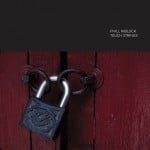Though he’s not the only one working in this musical area (think of Eliane Radigue, her ‘Trilogie de la Mort’ especially, or Alvin Lucier with his ‘Music on a Long Thin Wire’), I can hardly think of anyone creating drones more ‘minimal’ than Phill Niblock does.
Phill Niblock (born 1933) has a vast catalogue of compositions exploring the essence of sound by asking the listener to zoom in almost indefinitely and forget about time. To the casual passer-by, the music may sound like it’s only one endless chord and if you don’t have the right mindset you’ll probably get extremely bored soon. But if you let the sound grab you, you’ll hear the subtle nuances and interplay of the interacting waveforms.
As Bob Gilmore puts it in the lines notes: “Niblock’s materials create a web of subtle pitch distinctions that appears static but which in fact undergoes constant changes. The patterns created in air by the beating an phasing of near-unison tones are like wet paint with one colour streaking into another; tiny striations appear and disappear, like figures in mist.’
Touch Strings is Niblock’s fourth release on the Touch label. As the title suggest, the compositions on this double CD use string sounds as basic sound material. The three different compositions have quite a different approach but fit together on this album very well.
On ‘Stosspeng’ the layered sounds of sustainer guitars and bass quitar with e-bows produce a calm fluctuating sound. The name comes from its performers: Susan Stenger and Robert Poss.
Arne Deforce’s cello playing is layered 32 times in ‘Poure‘, which makes the piece quite ‘agressive’ sounding when played loud (at some points the sound even reminded me of the sound of bagpipes).
‘One Large Rose’ concludes the album, and is in fact a few realtime recordings of the same piece superimposed on each other. This results in a massively immersive sound created by The Nelly Boyd Ensemble.
Of these three compositions, ‘Stosspeng’ is my personal favourite because of its softness, but I noticed that the experience of all three works can change dramatically if you listen to them on different volumes.
This music is definitely not meant for the casual listener. And a restless mind won’t help too. But if you give it the time and space to develop, you’ll discover wondrous results.
At 76, Phill Niblock may very well be viewed as avant-garde’s answer to Sun O))) 😉



